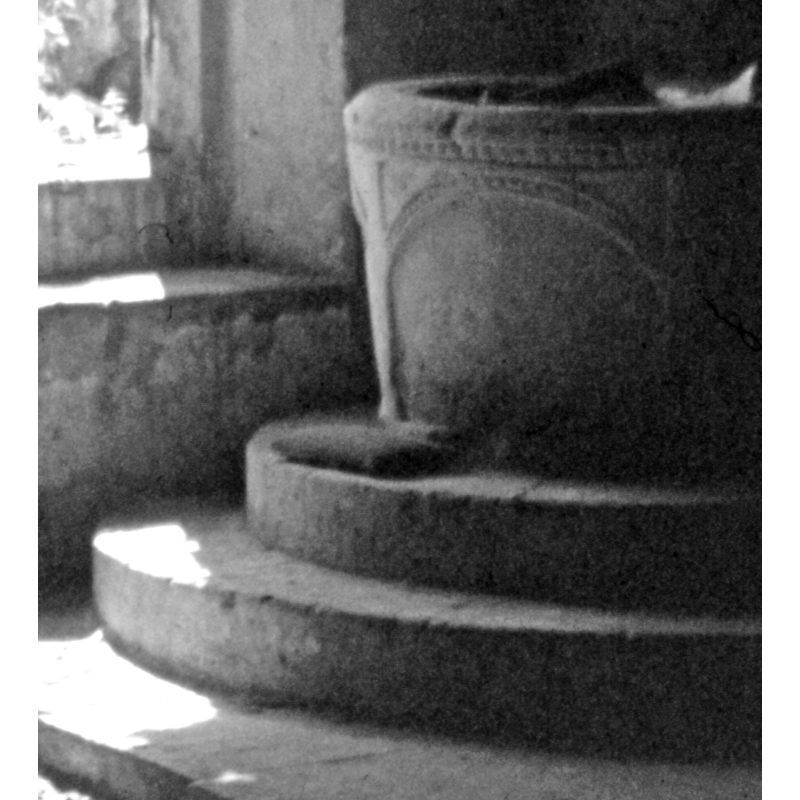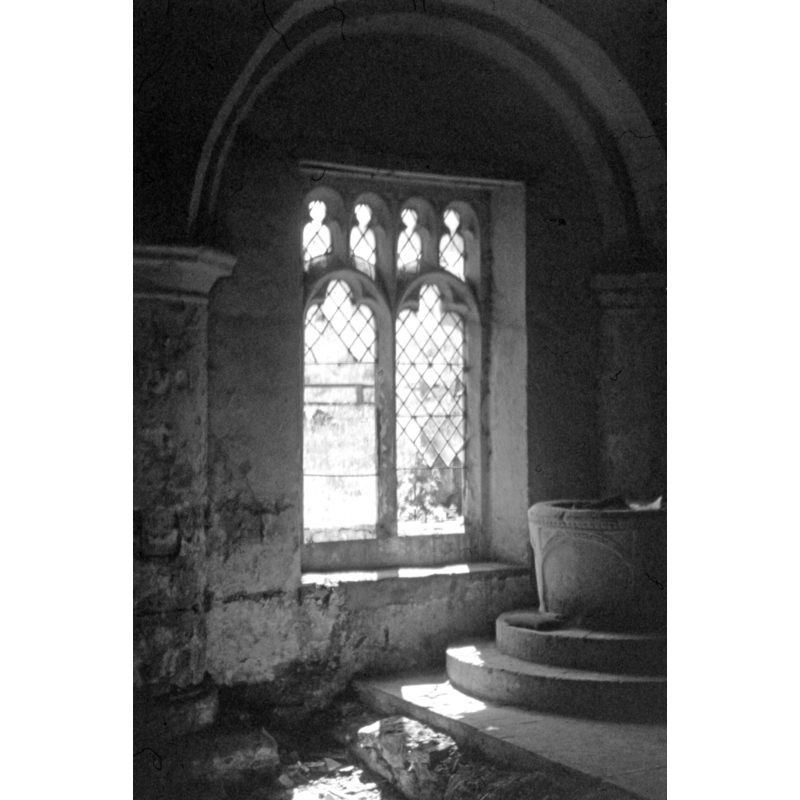Hull No. 4 / Kings-town upon Hull / Kingston-upon-Hull / Kingston upon Hull / Wyke on Hull

Results: 4 records
view of font
Scene Description: the old font originally from Wharram Percy after its installation in Hull's modern Church of St Michael in the 1950s
Copyright Statement: Image copyright © CRSBI, 2018
Image Source: digital photograph taken 7 June 2005 by Rita Wood for the CRSBI [www.crsbi.ac.uk/site/2920/] [accessed 15 September 2018]
Copyright Instructions: PERMISSION NOT AVAILABLE -- IMAGE NOT FOR PUBLIC USE
view of font in context
view of font in context
Scene Description: the old font originally from Wharram Percy after its installation in Hull's modern Church of St Michael in the 1950s
Copyright Statement: Image copyright © CRSBI, 2018
Image Source: digital photograph taken 7 June 2005 by Rita Wood for the CRSBI [www.crsbi.ac.uk/site/2920/] [accessed 15 September 2018]
Copyright Instructions: PERMISSION NOT AVAILABLE -- IMAGE NOT FOR PUBLIC USE
INFORMATION
FontID: 04288HUL
Object Type: Baptismal Font1
Church/Chapel: Parish Church of St. Michael and All Angels [orig. from Wharram Percy St Martin's]
Church Patron Saints: St. Michael & All Angels
Church Location: Orchard Park Rd, North Hull, Hull HU6 9BX, UK -- Tel.: +44 1482 805263
Country Name: England
Location: East Riding of Yorkshire, Yorkshire and the Humber
Directions to Site: Located off (W) the A1079
Ecclesiastic Region: Diocese of York
Font Location in Church: inside the mocern church, in the nave
Century and Period: 12th - 13th century, Late Norman / Transitional?
Church Notes: modern church of mid-20thC date (1934; 1958)
Font Notes:
Click to view
Mann (1985) informs that "the font from the old church at Wharram Percy found its way to Hull and St Michael's church, Orchard Park Road, built in the late 1950s. The font was moved there because the church at Wharram was decaying rapidly". The entry for this church in the CRSBI (2018) notes: "The 12thc font is now at St Michael’s, North Hull (see Site report for Hull, St Michael and All Angels). The base of the font can be seen against the base of Pier 2 of the S arcade, adjacent to the S doorway. [...] Font now at St Michael’s, North Hull: Morris (1919, 328) remarks that ‘The cup-shaped font is perhaps Trans. and exhibits nail-head ornament and a somewhat sprawling arcade.’ The early 12thc church would surely have had a font, and so it is possible, considering the two major 12thc phases in the building itself, that the font also had two periods of working: initially, the cutting of the arcading, and later the nailhead decoration." The entry for St Michael's church in Hull in the Victoria County History (York, East Riding, vol. 1, 1969) notes: "The arcaded circular 12thcentury font came from the ruined church of Wharram Percy." The entry for Hull St Michael's in the CRSBI (2018) notes: "St Michael’s, Orchard Park Road, North Hull, is a modern church - ‘the best post-war church in Hull’, Pevsner & Neave 1995, p. 513. It uses the old font from St Martin’s, Wharram Percy. [...] A photograph by Edwin Smith taken in 1951 at Wharram Percy shows the font by the S doorway there (Bell, Beresford 1987, pl. 1). The font was moved here 'in the late 1950s' (Bell, Beresford 1987, 129). The font is not the usual cylinder, but tapers to the bottom. The rim itself is roughly chamfered. The sides are divided into four bays of an arcade, with a continuous band of nailhead below the rim. Illustrated as having nailhead in two arches (Bell, Beresford, et al., 1987, p. 129; fig. 47), nailhead is cut in only these two bays of the four; the other two arches are plain. In contrast to the crisp nailhead, the setting-out is elementary, the arches having no attempt at columns with bases, capitals or even junctions with the arches, and all are rather crudely formed. The font is compared by Bell, Beresford with the one at Fridaythorpe, and they suggest a late 12th- to early 13th-century date. They also suggest that the pattern is carved on two bays only because the font stood in a corner (Bell, Beresford 1987, 129). The tapered cylinder is unusual; perhaps this was done so that the officiant could stand comfortably facing it. Some fonts, for example at Barmston and perhaps Atwick, have an arcaded base, which could have had the same practical purpose. The dimensions are within the limits of the cylindrical fonts of the earlier part of the twelfth century. While nailhead is a late indicator for twelfth-century work, it is odd that the pattern should be used contemporaneously with the very simply drawn and cut ‘arcade’. Was the nailhead a later improvement? But perhaps this is an extreme case of the general rule that patterns are better made than work requiring the skills of laying-out and drawing."
REFERENCES
Victoria County History [online], University of London, 1993-. Accessed: 2018-09-15 00:00:00. URL: https://www.british-history.ac.uk.
Corpus of Romanesque Sculpture in Britain and Ireland, The Corpus of Romanesque Sculpture in Britain and Ireland, The Corpus of Romanesque Sculpture in Britain and Ireland. Accessed: 2018-09-15 00:00:00. URL: http://www.crsbi.ac.uk.
Cox, John Charles, English Church Furniture, New York: E.P. Dutton & Co., 1907
Hutton, Graham, English Parish Churches, London: Thames & Hudson, 1976
Mann, Faith, Early Medieval Church Sculpture: a Study of 12th Century Fragments in East Yorkshire, Beverley: Hutton Press, 1985

